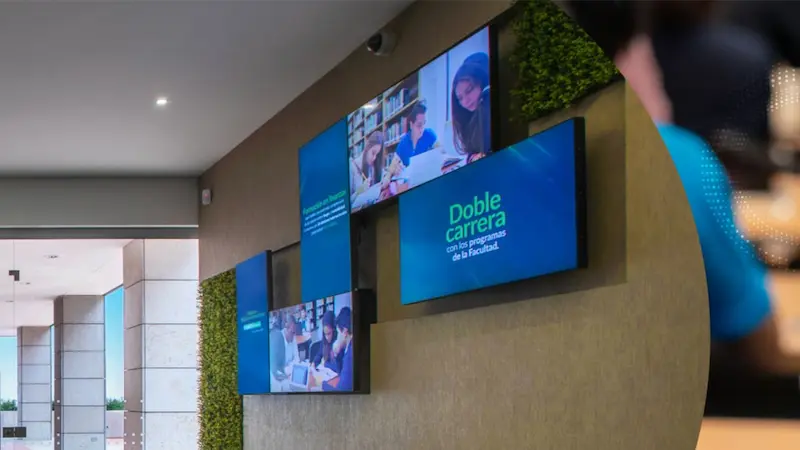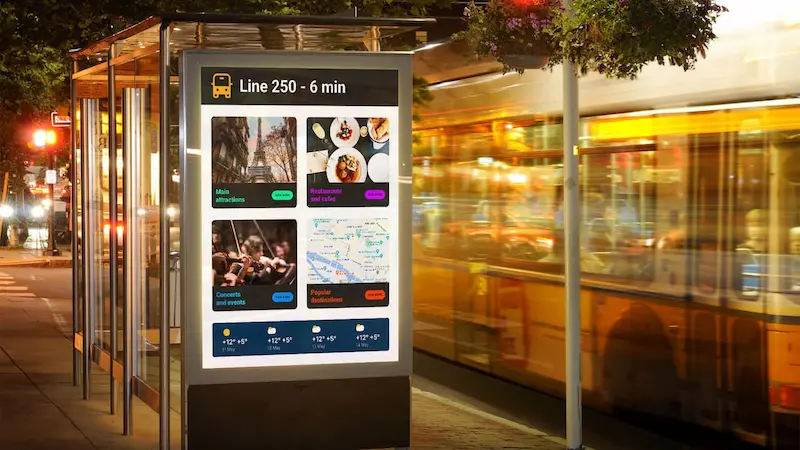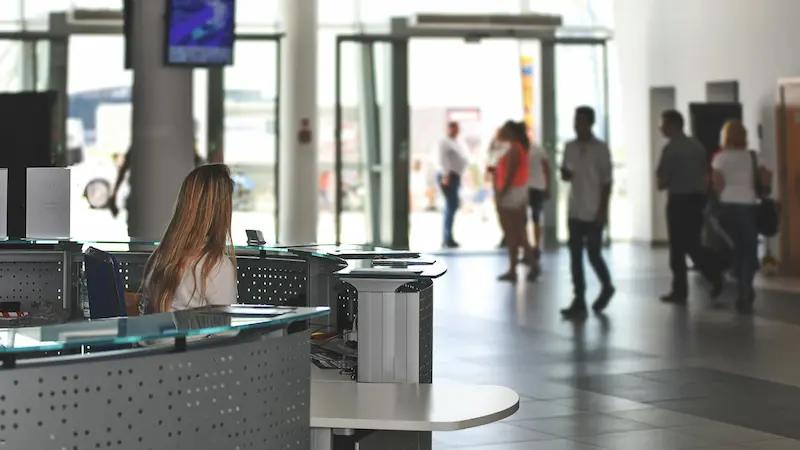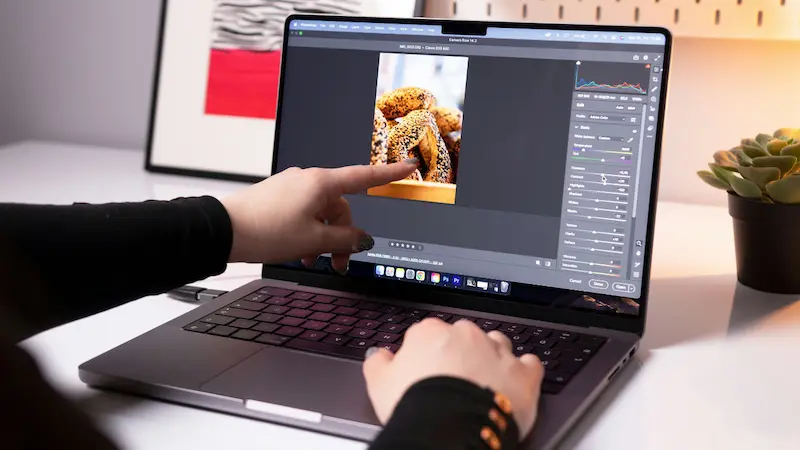
Table of Content
Technology has been the most prevalent aspect of assisting eateries in recent years. You can use a self-ordering kiosk to redefine the dining experience in your sit-down and fast-food establishment establishment. Customers may order food and beverages by typing their requests onto touch screens. In a few minutes, the customer has their order, complete with payment, at their fingertips.
The demand for self-service kiosks is on the rise. Because of the time and money they save business owners, the self-service kiosks market is valued at around $12 billion in 2022 and and probably reach $19.89 billion by 2032.
Understanding self-ordering kiosks
Customers may order their meals at a self-service kiosk, pay for them, and bring them to their table. Such a system often uses a touchscreen digital interface. The screen often shows menu items, prices, and instructions for payment and pickup, leading the consumer through the ordering procedure. Customers stay up-to-date on any promos and menu changes during this procedure.
Key benefits of self-ordering kiosks
Several types of restaurants may benefit from the convenience of self-service kiosks. These kiosks are useful for a variety of purposes. Here are the most significant advantages of self-service kiosks:
Enhanced customer experience
The dining experience of the consumer is paramount in every eatery. Kiosks can enhance this experience in several ways. One important advantage is that consumers no longer have to endure long queues, which may be annoying. The use of self-ordering kiosks in restaurants increases customer satisfaction significantly.
Increased order accuracy
Self-service kiosks ensure order accuracy. Customers use kiosks to place orders at their leisure and make any necessary adjustments themselves. Suppose the consumer has a customized order with multiple add-ons or eliminating things. In that case, they may enter it in themselves, instead of the back and forth instructing the worker and perhaps ending up misunderstood.
About 47% of customers said they would utilize a QSR (Quick-service restaurant) kiosk or self-service technology to personalize their orders. Customer input of food and drink items speeds up order processing and delivery.
Streamlined order processing
Customers may order and pay at their leisure using self-service kiosks. When everyone at the table wants to order, there is no need to wait for the waiter; guests instantly place their order and get it promptly. Streamlined ordering speeds up food preparation, allowing guests to get their meals quicker. It results in a better eating experience and more loyal and repeat consumers.
Case study: improving efficiency in QSRs
According to a Business Insider report, McDonald's, one of the hugest fast food chains, recorded a 5-6% increase in sales in locations with restaurant self-service kiosks.

When you automate routine operations, you free up employees to concentrate on more complex projects or provide better customer service in other ways. Preventing loss of time due to manual procedures helps restaurant companies concentrate on giving better services to boost customer experience. Lower labor expenses are another factor in increased efficiency, resulting from depending less on restaurant workers for primary activities.
Impact on operational efficiency
Self-service kiosks are a game-changer in today's age of fast-developing technologies. They have revolutionized the restaurant industry by letting customers order, pay, and get information without assistance. Here's how self-service kiosks influence operational efficiency.
Speeding up service
Any restaurant with slow service will lose customers quickly. Customers feel annoyed if they have to wait. Automated kiosks allow customers to place orders quickly so they don't need to wait for service, whether perusing the menu or placing an order. Self-ordering kiosk speeds up processes and make it faster to serve clients.
Reducing wait times
About 91% of consumers will give up and depart when a queue exceeds ten individuals. That's a significant amount of money in missed revenue and unhappy customers. To speed up the ordering process, you should eliminate the impediments to communication and clarity. Using a self-ordering kiosk optimizes the restaurant's workflow since the kitchen staff receives clear orders and works on them immediately.
Case study: optimizing workflow in the kitchen
Mistaken orders lead to wasted time, effort, and food. Redoing an order is expensive and might interrupt the kitchen's workflow, resulting in inconveniences for other clients. It is one of the reasons why Chili's added self-ordering kiosks to its tables. As a result, the chain experienced a 20% boost in desert sales. These kiosks also improve the speed of the ordering process since once the customer pays for an order from their table, it appears on the kitchen screen. It provides a faster and more personalized ordering experience for the customers.
Boosting sales and revenue
Companies still have trouble figuring out how to offer their goods and services to customers best. A restaurant's bottom line may benefit from self-service kiosks in several ways, including increased sales from upselling and loyal clients from satisfied customers who appreciate the convenience.
Upselling opportunities
Restaurant kiosks are increasing profits because they upsell more often than cashiers do. Customers often spend an extra 20% while using self-service kiosks. The display of the most popular products immediately entices customers.
The system may recommend extras to clients, such as a topping or a side dish. Most visitors don't like upselling attempts made in person. However, visitors are more likely to place an order when presented with helpful advice.
Increased order frequency
Kiosks are more efficient than cash registers when it comes to taking orders. Total order time, or the time it took from when a customer began ordering until their food was available for pickup, was reduced by 40% in QSRs with kiosks. It is a huge win for QSRs since studies show that even a 7-second decrease in customer wait times may boost potential market share by as much as 3%.
Case study: financial gains for restaurants
A study by Harvard Business Review found that taking orders using self-service kiosks resulted in a 20% increase in revenue compared to using human cashiers. In McDonald's, the study discovered that customers spend around one dollar more using a kiosk, leading to a 30% rise in average cheque size.
Customer preferences and adoption rates
More and more hospitality businesses use self-ordering kiosks because automating mundane processes affects client satisfaction and bottom-line profits. Here's how these kiosks are revolutionizing customer preferences and adoption rates:
Shifting consumer behavior
Self-service kiosks have become more prevalent because of their intuitive mobile phone-like user interfaces. Many sectors have examined the impact of self-service technologies on consumers' behaviors and routines.
Self-service has quickly replaced conventional checkout methods as the preferred business method. According to a Revenue Management Solutions LLC study, 58% of Millenials and 67% of Generation Z favor eating at a diner with self-service kiosks.
Adoption trends in the restaurant industry
One of the trends changing the restaurant industry is mobile device integration with self-service kiosks. Due to the prevalence of smartphones, it is now essential for kiosks to include app functionality. It involves users utilizing mobiles to scan product barcodes and check pricing. Integration with banking applications paves the way for contactless kiosk payments, eliminating the need to carry cash or plastic.

Another trend is intelligent machines and customized solutions. AI-driven algorithms in kiosks include both speech and face recognition. For instance, KFC is building a restaurant with the help of Baidu, the Chinese search engine company, that employs artificial intelligence face recognition technology to predict what a client wants to eat according to their gender, facial expressions, and different visual data. Researchers also utilize data analysis to study the habits of customers. It facilitates the provision of individualized product suggestions to clients in light of their past purchases or browsing habits. A digital menu for restaurants is also another trend that makes the self-ordering process much simpler.
Research insights: Numbers and statistics
Increased competition, shifting consumer tastes, and the ongoing quest to perfect the self-service kiosk user experience all contribute to the rapid development of the industry. For a better grasp of the revolutionary impact of self-service kiosks, let's take a look at some numbers:
- Market Research Future anticipates an exponential increase in self-service technology, estimating a jump from USD 33.2 billion in 2022 to around USD 73.8 billion by 2030.
- 73% of consumers want to figure out solutions on their own, according to Forbes' analysis of customer experience, and 67% would rather use self-service than contact a support representative.
Addressing concerns and challenges
Despite their usefulness, kiosks need more support for widespread acceptance. This section discusses typical deployment difficulties and offers suggestions on how restaurant owners might deal with them.
Potential drawbacks of self-ordering kiosks
Smaller restaurants may find the expense of deploying kiosks prohibitive. Likewise, kiosks are like any other technology; they might malfunction. You know how aggravating technological difficulties can be. When introducing new technology, there is always the risk of encountering connection, interoperability, integration, and data security difficulties. It might also be challenging to integrate kiosk software with external systems.
Overcoming implementation challenges
QSRs should prepare for potential problems by considering many operational factors. It would help if you first got support for the kiosk's intended audience inside the company. It is a vital process since it determines how individualized the final solution will be and whether or not the kiosk will need to be too complicated to serve its intended purpose.
The second step is to find reliable production sources. Suppose you're looking to cut down on the amount of people involved. In that case, finding a kiosk supplier that can handle everything from design to manufacture to installation and maintenance is a major first step. As a result, fewer technical problems will emerge during implementation. Finally, from a technical standpoint, it is critical to identify the correct component partners, helping ensure the delivery of a high-quality product with good usability.
Balancing human interaction and automation
Customers at many quick-service and fast-casual dining establishments can place orders with a human cashier or on an image-driven touchscreen kiosk. It's the optimal method for combining human connection with technological advancements. With technology, there is always some compromise involved.
For example, Protein Bar & Kitchen, located in the District of Columbia, Illinois, and Colorado, uses this strategy. Several years ago, it attempted kiosk-only service in one of its eateries, but after a few months, management discovered that customers also wanted to connect with personnel. Right now, the chain is working to strike a good balance between the human and automated elements. Customers can always ask for help from a human, but some customers may feel more at ease utilizing the automated kiosks.
Integration with fast food chains

Adding self-service kiosks to your quick-service restaurant's point-of-sale system allows your business the adaptability to keep up with the industry's ever-changing demands, all while enhancing your customers' dining experiences and growing your bottom line.
McDonald's as a pioneer
McDonald's was an early adopter of self-service kiosks, which have become standard at many fast food chains. Kiosks allow customers to make orders without assistance from staff, eliminating the potential for misunderstandings. After customers see the offerings on the McDonald's menu boards, they can use the self-service kiosk to complete the order.
It results in more precise orders and quicker service. Self-service kiosks are advantageous because they help companies save time, money, and energy while improving customer satisfaction and lowering wait times.
Case study: How other major chains are following suit
The self-service kiosk has started to replace cashiers in McDonald's restaurants throughout the globe. Similar quick-service restaurants have begun to emerge. KFC has revealed intentions to put over 5,000 kiosks in its locations globally. Meanwhile, Taco Bell is considering a radical update to its self-service technology in the United States.
Take advantage of self-service kiosks.
You can use a self-ordering kiosk whether you own a tiny company, a fast food joint, or a sit-down restaurant. They make it easier for customers to place orders and pay, which boosts your income and attracts repeat business. Get custom-built kiosks for your restaurant since self-service kiosks are not going anywhere. Remember to ensure your self-service kiosk uses reputable software to run updates and manage your displays effectively. Try the 14-day free version of Look Digital Signage and manage your content remotely!







